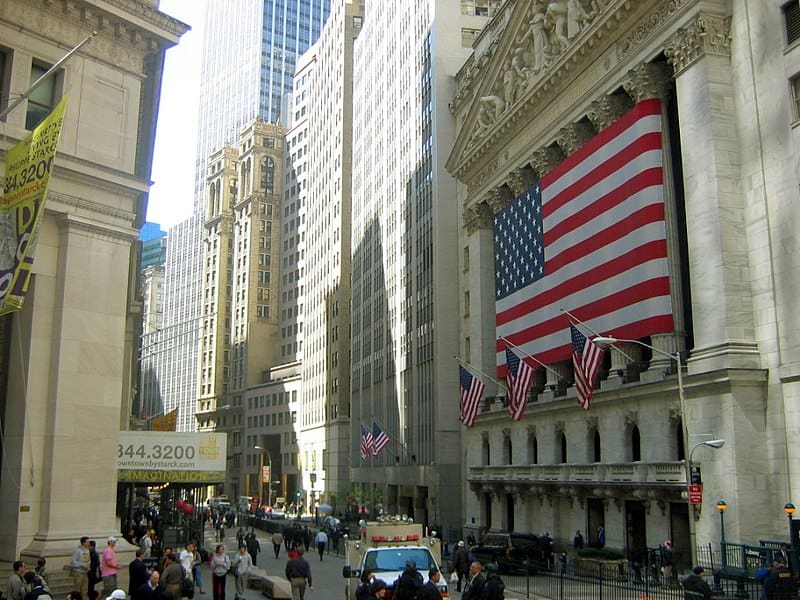Persistent inflation remains the Federal Reserve’s No. 1 concern, even as the banking sector remains on edge after two big bank failures last month. This week’s Consumer Price Index, due to be announced Wednesday at 8:30 am ET, could determine whether the central bank raises rates again in May.
That means it will also weigh on markets, especially now that Wall Street’s focus has shifted from the financial system to the economy.
“Inflation is no less relevant than it has been for the past two years,” wrote Greg McBride, chief financial analyst at Bankrate. “The Consumer Price Index remains the most-watched monthly economic report.”
So what are they expecting?
What’s happening: Core inflation levels have eased for five months in a row on an annual basis, according to CPI readings, but they still remain near historic highs at 6% – well above the Federal Reserve’s goal of 2%.
Last month’s reading showed an increase in prices between January and February, which doesn’t “inspire confidence that 2% is just around the corner,” said McBride.
For March, economists forecast a 0.4% monthly increase in the CPI, which matches the September – February average and would keep those year-over-year averages high.
So what will it take to make the Fed, and investors, happy?
“To feel good about where inflation is headed, we need to see more than just moderation in the rate of both headline and core inflation,” said McBride. “We also need to see moderation in price pressures across a wide range of categories that are staples of the household budget: shelter, food, electricity, motor vehicle insurance, apparel, and household furnishings and operations.”
But “resiliently elevated prices have the potential to spark yet another Fed rate hike in May,” said Greg Bassuk, CEO at AXS Investments. That’s notwithstanding the slowing economy “that has been weighed down even more heavily by the banking system debacle,” he added.
What it means for markets: Between inflation data and the start to the first-quarter corporate earnings season (three of the largest US banks, JPMorgan Chase, Wells Fargo and Citigroup report this Friday), this week is set up for heightened stock volatility, said Terry Sandven, chief equity strategist at US Bank Wealth Management.
“Persistent inflation, rising interest rates and uncertainty over the pace of earnings growth in 2023 remain headwinds to advancing equity prices. Each will be in focus this week,” he said.
Retail investors are buying bank stocks
TD Ameritrade released its March Investor Movement Index on Monday, which tracks what retail investors are up to.
The report found that retail traders continued to be net buyers of equities in March. That means Main Street traders, not large financial institutions, are purchasing the majority of new stock in the US.
The increasing power of the retail investor – fueled by stimulus cash, easier access to trading platforms and more market education amongst other things, has been an ongoing trend since the beginning of the pandemic. Lately, large companies have begun to change their investor relations strategies to become more retail investor friendly. Now even the ‘smart money’ traders are using Reddit for stock tips.
So where are they investing? The strongest buying interest is in the Financial sector, found TD Ameritrade. That comes despite macroeconomic catalysts in March like the collapse of Silicon Valley Bank and the emergency sale of Credit Suisse.
“March was full of surprises, but the overall impact among TD Ameritrade retail clients when it came to exposure to the markets was neutral,” said Lorraine Gavican-Kerr, managing director at TD Ameritrade. “For the second month in a row, our clients were net buyers of equities, seemingly eying an opportunity to buy into the Financial sector’s lows and to sell off the highs in Information Technology.”
The five most popular stocks to purchase, according to TD Ameritrade were Tesla, Rivian, Ford Motors, Amazon, and the embattled First Republic Bank.
Retail investors, meanwhile, were net sellers of Meta, NVIDIA, Advanced Micro Devises, Intel and Apple.
NY Fed says short-term inflation expectations have increased
Inflation expectations have increased at the short-term and medium-term horizons, according to The Federal Reserve Bank of New York’s March Survey of Consumer Expectations, released on Monday.
Inflation expectations for the year ahead have increased by half a percentage point to 4.7%, the survey found. That marks the first increase since October 2022.
The survey, which questions about 1,300 household heads in the US each month, also found that respondents were more pessimistic about the outlook for the US labor market than they were in previous months. Unemployment expectations — or the probability that the US unemployment rate will be higher one year from now — increased by 1.3 percentage points to 40.7%, the New York Fed found.
The recent banking crisis and looming credit crunch also appears to be worrying households in the United States. The Fed reported that “perceptions of credit access compared to a year ago deteriorated in March.” The share of households that said it’s harder to obtain credit than one year ago reached an all time high.

